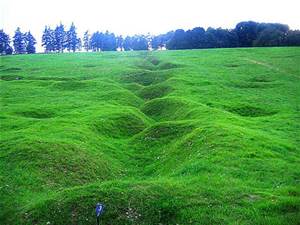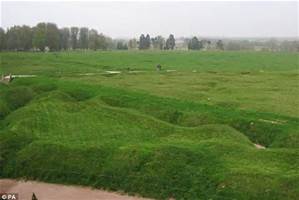A hundred years ago, the empires of Europe were engaged in fighting World War I. By the time the war ended in November 1918, four of the warring empires, the German, Austro-Hungarian, Russian and Ottoman would be demolished. Instead of ensuring peace, the war to end all wars would help set the stage for World War II. Many of the forces unleashed by World War I continue to affect global affairs to this day, especially in the Middle East.
Instead of ensuring peace, the war to end all wars would help set the stage for World War II. Many of the forces unleashed by World War I continue to affect global affairs to this day, especially in the Middle East.
By the summer of 1916, the machine gun had proved itself as a defensive weapon. Firing up to 500 rounds per minute, its ideal range was 2,000 yards, but it was still fairly accurate at 4,000. The deadly effect of machine gun fire helped immobilize the combatant armies. On the Western Front, the battle line had become a 400 mile system of trenches running across northwestern France from the English Chanel to the Swiss border.
On Saturday, July 1, the British launched the Somme offensive, the first great British offensive of the war. The attack was designed to rupture the German  defenses and to relieve the pressure on the beleaguered French forces at Verdun. Early in the morning, approximately 120,000 soldiers of the British Expeditionary Force moved out of their trenches to assault the German lines.
defenses and to relieve the pressure on the beleaguered French forces at Verdun. Early in the morning, approximately 120,000 soldiers of the British Expeditionary Force moved out of their trenches to assault the German lines.
The British attack had been preceded by a week of heavy artillery bombardment that was supposed to destroy the barb wire and eliminate many of the German defensive positions. Although 1.6 million artillery shells rained down on the Germans, the artillery fire had surprisingly little effect. One British regiment of 801 men suffered a casualty rate of 89%. By the end of the day, 19,240 British soldiers had been killed and 38,231 wounded. The ground they captured was measured in yards, not the expected miles. The British generals were stunned by the scope of the failure, July 1, 1916 went into the record books as one of the worst days in the long history of the British Army.
Germans, the artillery fire had surprisingly little effect. One British regiment of 801 men suffered a casualty rate of 89%. By the end of the day, 19,240 British soldiers had been killed and 38,231 wounded. The ground they captured was measured in yards, not the expected miles. The British generals were stunned by the scope of the failure, July 1, 1916 went into the record books as one of the worst days in the long history of the British Army.
A British officer, Siegfried Sassoon, survived the first day of the Somme offensive unscathed. A brave soldier and a recipient of the British Military Cross, his Somme experience started him on a different journey. He would later write some of the most heartrending anti-war poetry to come out of World War I. The following is a short example of Sassoon’s work: “Five minutes ago I heard a sniper fire: Why did he do it?… Starlight overheard—Blank stars. I’m wide-awake and some chap’s dead.”
Somme experience started him on a different journey. He would later write some of the most heartrending anti-war poetry to come out of World War I. The following is a short example of Sassoon’s work: “Five minutes ago I heard a sniper fire: Why did he do it?… Starlight overheard—Blank stars. I’m wide-awake and some chap’s dead.”
The Somme offensive would continue until November 1. At its conclusion, the British had suffered 420,000 casualties, the French 200,000 and the Germans around 465,000. British commanders learned lessons from the horror of the Somme. As they developed new tactics, the creeping artillery barrage which advanced in front of the troops at a rate of 100 yards every four minutes came into being. Infantry began advancing in short rushes under covering fire. These and other tactical refinements plus the arrival of American forces would eventually give the Allies the edge needed to overcome the stubborn defenses of the German Army.
Discover more from Blog for Arizona
Subscribe to get the latest posts sent to your email.

Haig should have been fired and tried as a war criminal for his actions at the Somme. He used his political connections to stay on the job. Thousands of British troops would have survived if not for Haig’s incompetence and arrogance.